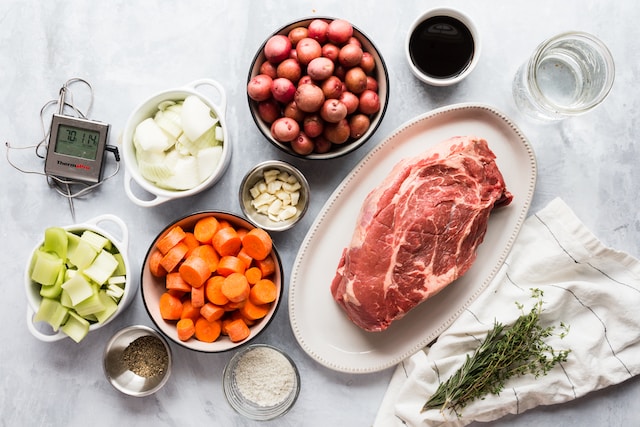
Cooking is an art of perfection, where everything must be in perfect balance. From the aromas permeating your senses to the flavors of each dish, every ingredient plays a significant role in the final result of your cooking. With the rise of fast food chains and processed foods, the importance of cooking with fresh, quality ingredients has been somewhat lost. Adding the right ingredients to your dish can make or break the final outcome.
Essential Ingredients for Cooking
Cooking is both an art and a science that requires the perfect balance of various ingredients to achieve a delicious and nutritious outcome. Choosing the right ingredients to include in your dish is crucial, and each one adds a unique flavor, texture, and nutritional value. below are some of the most essential ingredients that every kitchen should have to create flavorful and healthy dishes.
Salt: Salt is the most crucial ingredient in any kitchen. It enhances the flavor of your dish and also acts as a preservative. Always use good quality salt and avoid using too much salt in your cooking.
Olive Oil: Olive oil is a healthy and versatile cooking oil that can be used in a variety of dishes. It has a mild flavor and is ideal for sautéing and frying. It is also great in dressings and marinades.
Garlic: Garlic is an essential ingredient in many cuisines. It has a unique flavor and provides a powerful punch to your dishes. It can be used in soups, stews, sauces, and marinades.
Onions: Onions are another fundamental ingredient that provides flavor and texture to your dishes. They can be cooked or eaten raw and are used in almost every cuisine worldwide.
Herbs and Spices: Herbs and spices are essential in cooking as they add flavor, aroma, and color to your dishes. They can be used fresh or dried and are used in everything from marinades to soups and stews.
Eggs: Eggs are a versatile ingredient and are used in cooking and baking. They provide moisture, binding, and leavening to your dishes, making them a crucial ingredient in many recipes.
Flour: Flour is used in baking and cooking, and there are many types of flour available. It is used for thickening sauces, making bread, pasta, and desserts.
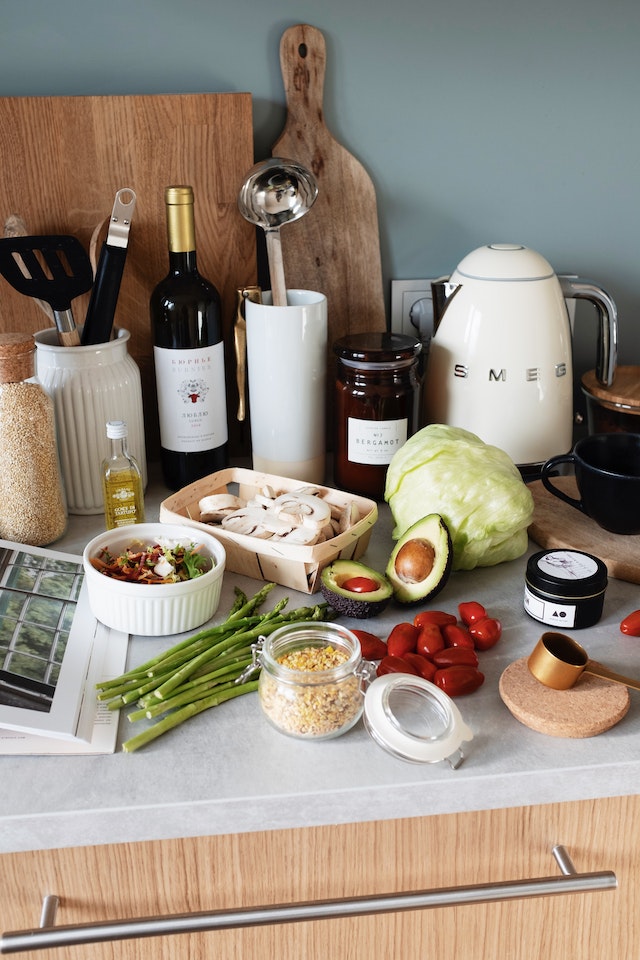
Sugar: Sugar is used in baking and cooking and adds sweetness to your dishes. It can be used in everything from desserts to marinades and sauces.
Tomatoes: Tomatoes are a crucial ingredient in many cuisines, especially Italian dishes. They add acidity, a bright flavor, and a beautiful color to your dishes.
Fresh Produce: Fresh produce such as fruits and vegetables are essential in cooking as they provide vitamins, minerals, fiber, and nutrients. Always choose produce that is in season and preferably from local sources.
Herbs and Spices
Herbs and spices are essential in cooking as they add flavor, aroma, and color to your dishes. They are used to season and enhance the flavor of meats, vegetables, and grains. They also have health benefits and are used in traditional medicine for their healing properties. Here are some essential herbs and spices that every kitchen should have:
Basil: Basil is a fragrant herb that has a sweet and slightly peppery flavor. It is used in Italian cuisine and is commonly used in pasta sauces and pesto. Basil also has antioxidants and anti-inflammatory properties.
Cilantro: Cilantro is a herb that is commonly used in Mexican and Thai cuisine. It has a citrusy taste and is often used in salsa, guacamole, and curries. Cilantro is also a good source of vitamins and minerals.
Rosemary: Rosemary is a fragrant herb that is commonly used in Mediterranean cuisine. It has a woody flavor and is used in roasted meats, soups, and stews. Rosemary has antioxidants and anti-inflammatory properties.
Thyme: Thyme is a herb that is commonly used in French and Italian cuisine. It has a slightly sweet and earthy flavor and is used in soups, stews, and sauces. Thyme also has anti-bacterial and anti-fungal properties.
Cumin: Cumin is a spice that is commonly used in Indian and Middle Eastern cuisine. It has a warm and earthy flavor and is used in curries, chili, and falafel. Cumin is also a good source of iron, magnesium, and vitamin B6.
Paprika: Paprika is a spice that is commonly used in Hungarian and Spanish cuisine. It has a sweet and smoky flavor and is used in stews, soups, and marinades. Paprika also has anti-inflammatory and antioxidant properties.
Turmeric: Turmeric is a spice that is commonly used in Indian and Middle Eastern cuisine. It has a warm and slightly bitter flavor and is used in curries and rice dishes. Turmeric has anti-inflammatory and antioxidant properties and is also used in traditional medicine for its healing properties.
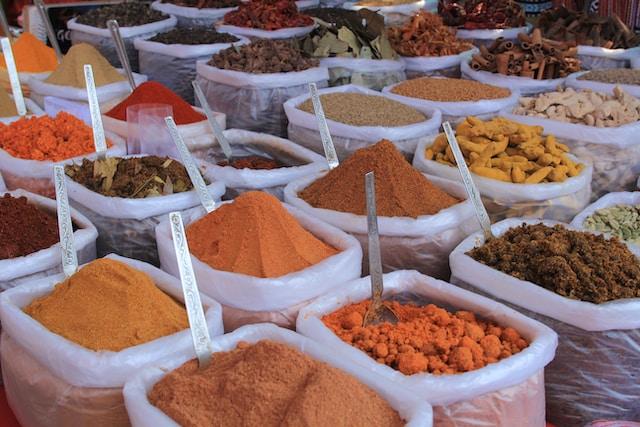
Oils and Fats
Cooking oils and fats are an essential ingredient in every kitchen. They are used for frying, baking, sautéing, and more. Different oils have different smoking points and flavors, so it is essential to choose the right oil for your dish and cooking method. Here are some essential oils and fats that every kitchen should have:
Olive oil: Olive oil is one of the most popular cooking oils, and it is commonly used in Mediterranean cuisine. It has a mild flavor and is rich in healthy fats. It is ideal for sautéing, roasting, and making dressings and marinades.
Coconut oil: Coconut oil is a popular oil used in many cuisines, especially in Southeast Asia. It has a slightly sweet taste and is solid at room temperature. It is ideal for frying and baking and is also used in vegan and plant-based cooking.
Avocado oil: Avocado oil is a healthy cooking oil that is rich in monounsaturated fats and antioxidants. It has a mild taste and is perfect for high-heat cooking such as roasting, grilling, and sautéing.
Butter: Butter is a classic cooking fat that adds flavor and richness to your dishes. It is perfect for baking, sautéing, and making sauces and gravies. Choose unsalted butter for cooking and baking to avoid excessive sodium intake.
Ghee: Ghee is a clarified butter that is commonly used in Indian cuisine. It has a nutty flavor and is perfect for high-heat cooking. Ghee has a high smoking point and can be used for deep-frying and sautéing.
Choosing the right oil
It is crucial to choose the right oil for different cooking methods. Some oils have a low smoking point and are not suitable for high-heat cooking, while others have a high smoking point and are ideal for deep-frying and roasting. Here are some guidelines on choosing the right oil for different cooking methods:
High-heat cooking: For high-heat cooking such as frying, it is essential to choose an oil with a high smoking point. Oils such as avocado oil, ghee, and peanut oil are perfect for high-heat cooking.
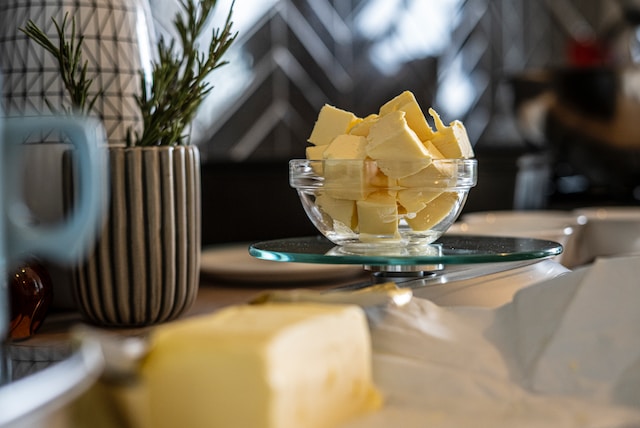
Medium-heat cooking: For sautéing and stir-frying, choose an oil with a moderate smoking point. Oils such as canola oil, grapeseed oil, and sesame oil are perfect for medium-heat cooking.
Low-heat cooking: For baking and making dressings, choose an oil with a low smoking point. Oils such as olive oil, sunflower oil, and coconut oil are perfect for low-heat cooking.
Healthy fats and cooking
Healthy fats are essential in cooking as they provide energy, promote hormone production, and support cell growth. They also help to absorb fat-soluble vitamins such as vitamin A, D, E, and K. Here are some healthy fats that every kitchen should have:
Mono-unsaturated fats: Found in olive oil, avocados, nuts, and seeds, mono-unsaturated fats are ideal for heart health and reducing inflammation.
Omega-3 fatty acids: Found in fatty fish such as salmon, sardines, and mackerel, omega-3 fatty acids are essential for brain health, reducing inflammation, and improving heart health.
Polyunsaturated fats: Found in vegetable oils such as sunflower oil, safflower oil, and soybean oil, polyunsaturated fats are essential for brain function and reducing inflammation.
Proteins
Proteins are an essential ingredient in every kitchen as they provide the building blocks for our bodies and help us with growth, repair, and maintenance. While meat and poultry are the most common protein sources, there are plenty of vegetarian and vegan options available as well. Here are some essential proteins that every kitchen should have:
Meat and poultry options
Meat and poultry are excellent sources of protein, iron, zinc, and vitamin B12. When selecting meat and poultry, it is essential to choose quality cuts from ethical and sustainable sources. Here are some options to consider:
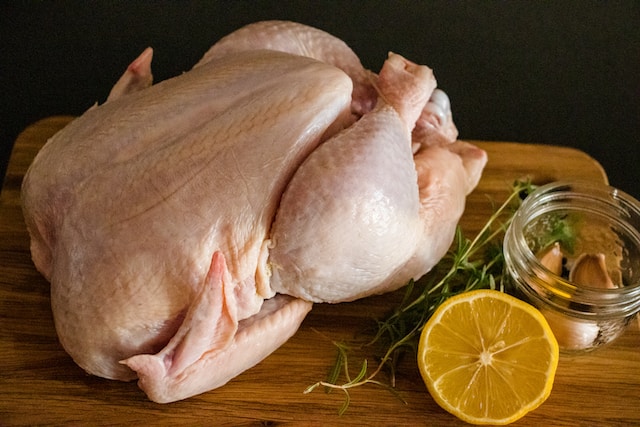
Chicken: Chicken is a versatile protein that can be prepared in a variety of ways, from grilled to fried, and baked to roasted.
Beef: Beef is a rich source of protein, iron, and vitamin B12. It can be used in everything from burgers to stews and roasts.
Fish: Fish is a healthy protein that is rich in omega-3 fatty acids. It can be used in everything from sushi to grilled fish dishes.
Pork: Pork is a rich source of protein, iron, and vitamin B12. It is used in everything from bacon to roasts and chops.
Vegetarian and vegan protein sources
Plant-based protein sources are becoming increasingly popular, and there are plenty of options available for vegetarians and vegans. Here are some options to consider:
Tofu: Tofu is a processed soy product that can be used in a variety of dishes. It is high in protein, calcium, and iron, making it an excellent option for vegetarians and vegans.
Legumes: Legumes such as lentils, chickpeas, and black beans are a rich source of protein, fiber, and iron. They can be used in everything from soups and stews to salads and veggie burgers.
Tempeh: Tempeh is a fermented soybean product that is high in protein, fiber, and antioxidants. It has a nutty flavor and can be used in a variety of dishes.
Quinoa: Quinoa is a gluten-free grain that is a good source of protein, fiber, and vitamins. It can be used in everything from salads to side dishes and even desserts.
Selecting and preparing proteins
Regardless of which protein source you choose, there are some tips to keep in mind when selecting and preparing them. Here are some tips to consider:
Choose quality cuts: When selecting meat and poultry, choose quality cuts from ethical and sustainable sources. Look for grass-fed beef, organic chicken, and wild-caught fish.
Marinate: Marinating meat and poultry can enhance its flavor and tenderize it before cooking. Try using acidic ingredients such as vinegar, lemon juice, or yogurt to marinate your protein.
Cook at the right temperature: Whether you are grilling, baking, or frying, it is essential to cook your protein at the correct temperature to ensure that it is safe to eat. Use a meat thermometer to gauge the internal temperature of your protein.
Experiment with seasonings: Adding different spices and herbs to your protein can enhance its flavor and provide health benefits. Try seasoning your protein with garlic, rosemary, turmeric, or cumin.
Fresh Produce
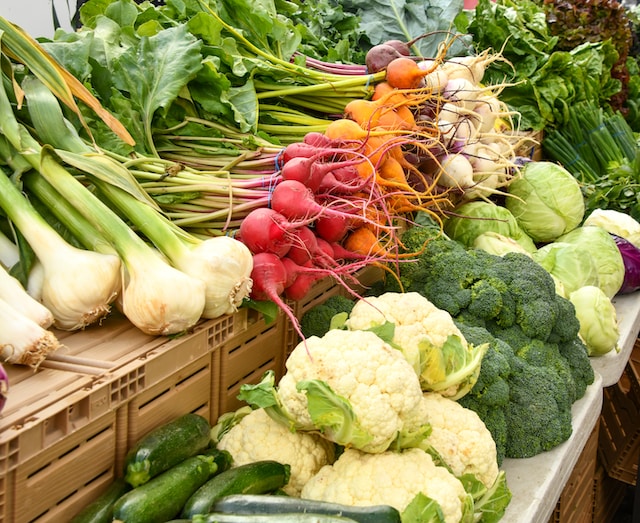
Fresh produce is an essential ingredient in cooking as it provides a variety of vitamins, minerals, fiber, and nutrients to your dishes. The benefits of incorporating fresh produce in your cooking are countless; not only does it add flavor and nutritional value, but it also helps to support local farmers and businesses.
Seasonal fruits and vegetables
Seasonal produce is fresher, tastier, and more nutritious than produce that has been shipped over long distances and stored for long periods. It is also more affordable and readily available. In-season produce varies depending on the region and climate, but some examples of seasonal produce include:
- Spring: asparagus, strawberries, artichokes, peas, radishes, lettuce, and carrots.
- Summer: tomatoes, watermelon, peaches, berries, corn, cucumbers, and zucchini.
- Fall: apples, pumpkins, pears, sweet potatoes, Brussels sprouts, and kale.
- Winter: citrus fruits, pomegranates, squash, beets, and turnips.
Incorporating a variety of colorful produce
It is important to incorporate a variety of colorful produce in your cooking to ensure that you are getting a wide range of nutrients. Different colors of fruits and vegetables offer different health benefits, and consuming a variety of colors is key to a healthy diet.
Red produce such as tomatoes and watermelon contain the antioxidant lycopene which can help to lower the risk of cancer and heart disease. Orange and yellow produce such as carrots and sweet potatoes are high in beta-carotene which is important for eye health and the immune system. Green produce such as spinach and broccoli are rich in iron and magnesium, two essential minerals for overall health. Blue and purple produce such as blueberries and eggplant contain anthocyanins which have been shown to have anti-inflammatory properties and improve cognitive function.
Storing and handling fresh produce
To maintain the quality of your fresh produce, it is crucial to handle and store it properly. Here are some tips to keep in mind:
- Store produce in a cool, dry place such as the refrigerator or a cool dark pantry.
- Store different types of produce separately as they can cause each other to ripen or spoil faster.
- Wash produce thoroughly before consuming to remove any dirt or bacteria.
- Use produce within a few days of purchase to ensure peak freshness and flavor.
- Consider freezing produce that is about to spoil to prevent waste and extend its shelf life.
Grains and Cereals
Grains and cereals are another essential ingredient in cooking and provide a great source of complex carbohydrates, protein, and fiber. There are many types of grains and cereals available, each with its unique nutritional value and cooking method. Here are some of the most commonly used grains and cereals in cooking:
Rice
Rice is a staple in many cuisines worldwide, from risotto in Italy to sushi in Japan. It is an excellent source of energy and is gluten-free. Choose brown rice for added nutrition and cook it by combining it with water, bringing it to a boil, and then simmering for about 20 minutes.
Quinoa
Quinoa is an ancient grain that has gained popularity in recent years due to its high protein content and gluten-free status. It is perfect for plant-based and vegetarian diets. Cook quinoa by combining it with water and simmering for about 15 minutes.
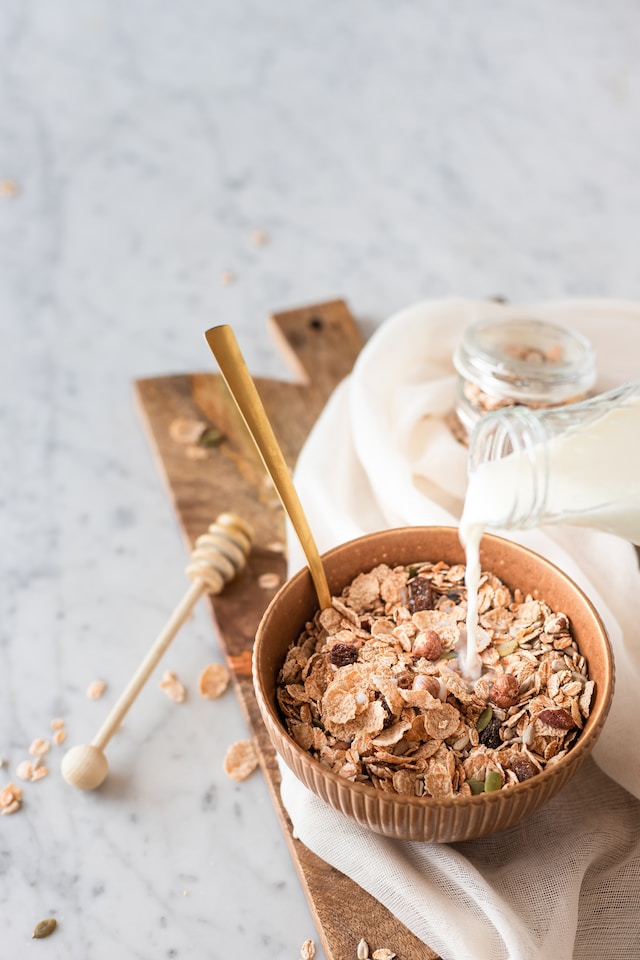
Oats
Oats are a nutritious grain that is high in fiber and protein. They can be used in everything from breakfast porridge to baked goods. Choose steel-cut oats or rolled oats for added nutrition. Cook oats by combining them with water or milk and simmering for about 10-15 minutes.
Using whole grains in your cooking is a great way to add nutrition to your meals. Whole grains contain more fiber, vitamins, and minerals than refined grains, which have been processed and stripped of their nutrients.
Dairy
Dairy products are a common ingredient in cooking and baking. They add richness, flavor, and texture to your dishes. However, for individuals who are lactose intolerant or follow a vegan diet, dairy alternatives are available. Here is a breakdown of some common dairy products and their alternatives:
Milk: Milk is a commonly used ingredient in cooking and baking. It adds moisture and richness to your dishes. For individuals who are lactose intolerant or vegan, there are many alternatives available, such as soy milk, almond milk, and oat milk. These alternatives have a similar consistency to dairy milk and can be used in the same way.
Cheese: Cheese is a popular ingredient in many cuisines worldwide. It adds flavor and texture to your dishes. For individuals who are lactose intolerant or vegan, there are many dairy-free alternatives available, such as vegan cheese made from nuts, soy, and other plant-based ingredients.
Yogurt: Yogurt is a common ingredient in many dishes, from dips to marinades. For individuals who are lactose intolerant or vegan, there are many alternatives available, such as soy, coconut, and almond-based yogurts.
Cooking is an art that requires the perfect balance of various ingredients. From salt to dairy, each ingredient plays a significant role in the final outcome of your dish. It is important to choose fresh and quality ingredients to ensure that you create dishes that are both flavorful and nutritious. With the essential ingredients outlined in this guide, you can create delicious and healthy meals that will satisfy your taste buds and nourish your body.
